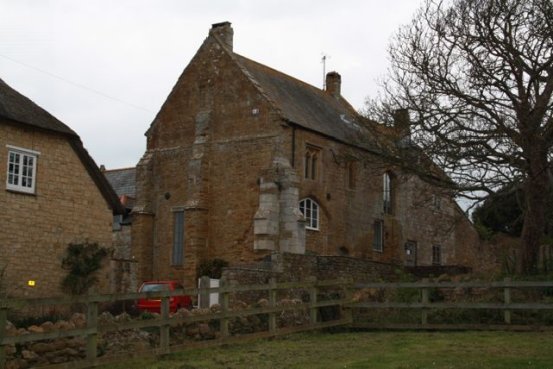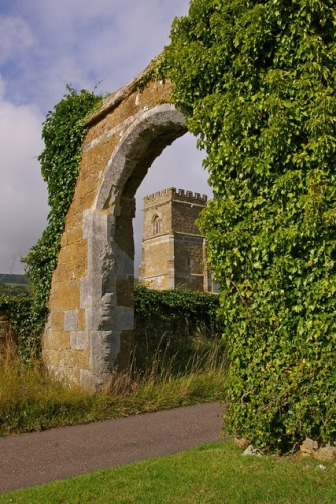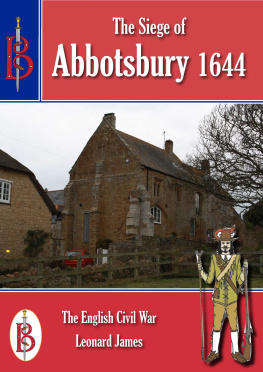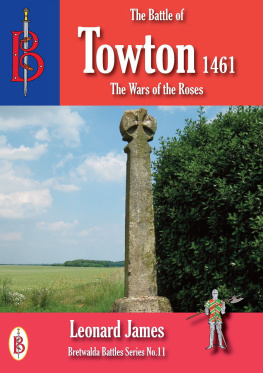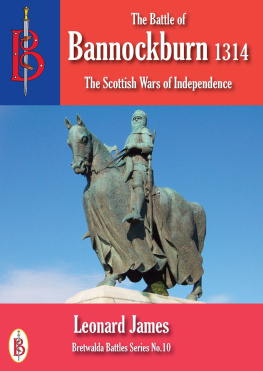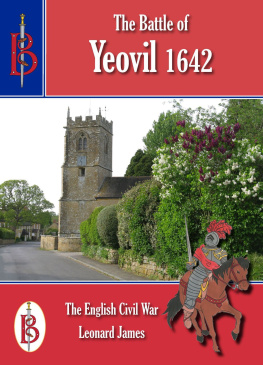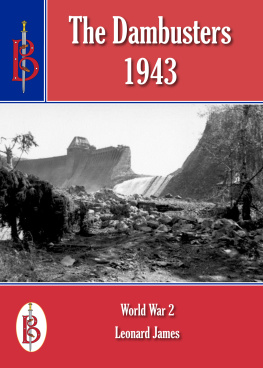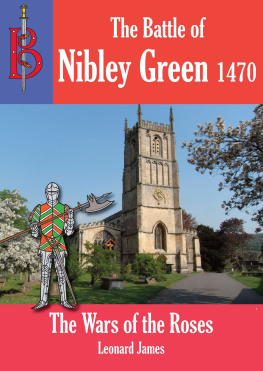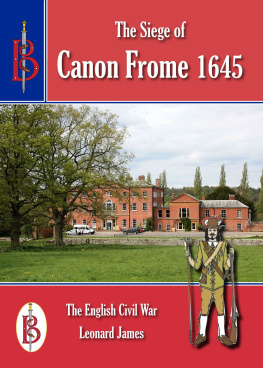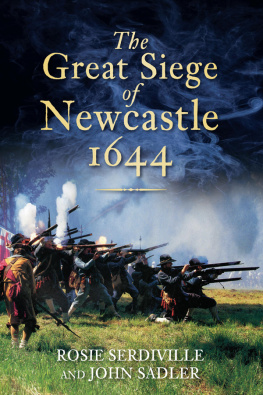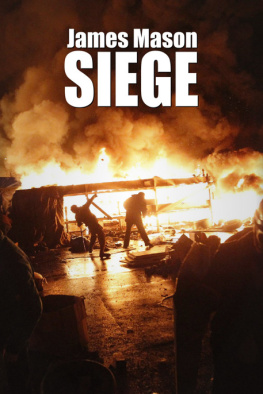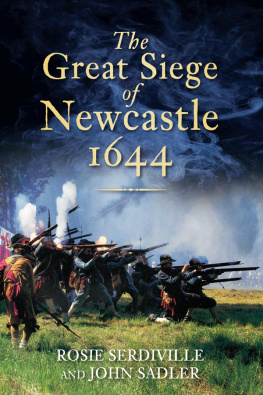Bretwalda Battles
The Siege of Abbotsbury 1644
The English Civil War
by Leonard James
Published by Bretwalda Books
Website : Facebook : Twitter : Blog
This ebook is licensed for your personal enjoyment only. This ebook may not be re-sold or given away to other people. If you would like to share this book with another person, please purchase an additional copy for each person. If you're reading this book and did not purchase it, or it was not purchased for your use only, then please purchase your own copy. Thank you for respecting the hard work of this author.
First Published 2014
Copyright Bretwalda Books 2014
Leonard James asserts his moral rights to be regarded as the author of this work.
Contents
Abbotsbury
The Dorset village of Abbotsbury is today a place of thatched stone cottages strung out along a single street, that widens at one point to form a market square. The village has a population of around 500 and is surrounded by the beautiful landscape of the Dorset Downs. The beauty of the place has made this a tourist destination, so there are several teashops as well as two pubs and more shops than a place this size might otherwise expect.
Although the village is today as peaceful as any in England, it was in 1644 a place of war and bloodshed for it became a focus for a battle fought as part of the English Civil War between Royalist Cavaliers loyal to King Charles I and Parliamentarian Roundheads.
To understand why savage war came to this spot, it is necessary to look back at the village's history. A Celtic hillfort on nearby Wears Hill shows this area has been inhabited for centuries, but the village itself seems to have been founded by the invading English sometime around ad600. It is first mentioned in the 930s as part of a land grant by Kind Edmund I, at which time it was a farming community. A century later an abbey was founded here by the Christian Viking, Orc. The abbey owned the village until the dissolution, when it was closed down.
The old Abbey Gatehouse, converted to a dairy in the 16th century it is now a house.
The estate was bought by local gentleman Sir Giles Strangways. He pulled down most of the old abbey buildings, using the stone to build himself a comfortable manor house. Among the few structures that he left standing were the Tithe Barn (now the largest thatched barn in England) and the gatehouse, which he turned into a dairy.
In the years that followed the village continued to thrive and prosper. Most people made their living from the livestock who grazed the upland pastures nearby. They worked either caring for the animals, or processing the wool and milk they produced. fishing was another big employer, boats being launched from the nearby beach to fish the waters of the English Channel.
The Church of St Nicholas, Abbotsbury, see through the ruined arch of the old manor house.
When the English Civil War broke out in 1642 the county of Dorset was one of the most divided in the kingdom. Most of the towns, except Dorchester, declared for Parliament while most of the countryside was for the King. The owner of Abbotsbury at the time was Sir John Strangways, one of the most prominent Royalists in the county
Strangways had been born in 1585 and was elected to Parliament several times between 1614 and 1629 as well as serving as Sheriff of Dorset. He held a number of other local government positions and visited Court many times. When Charles summoned Parliament in 1640 for the first time in 11 years, Strangways was elected MP for Weymouth, despite his known support for King Charles and Weymouth's Parliamentarian sympathies.
In Parliament, Strangways argued long and hard in fabour of the King's case, proving to be one of Charles's more able supporters in Parliament. When the war broke out, Strangways slipped away from London to return to Dorset. In September 1642 Parliament voted to expel all those MPs who had sided with the king, so Strangways lost his seat. This does not seem to have bothered him much for he was busy organising the Royalist cause in Dorset.
Among Strangways many achievements was the fortification of his manor house in Abbotsbury. The house itself provided useful rooms for a garrison of 200 men, with their horses stabled nearby, while the adjacent church was used as a storehouse with a lookout posted on top of the tower. Around the house and church were dug a complex of earthen ditches and ramparts, topped by timber palisades and walls. By the standards of the time these were not powerful defences, but they were good enough to safeguard against a surprise attack.
The garrison at Abbotsbury soon came to be an important one due to its strategic position. Weymouth to the east was a powerful Parliamentarian fortress, but its economic value was as a port. By closing the routes inland from Weymouth with garrisons at Abbotsbury and Dorchester, the Royalists stopped Weymouth producing money for Parliament and made it more of a liability than an asset. The Royalist soldiers based at Abbotsbury patrolled the roads and countryside, ensuring that Weymouth remained cut off.

A musketeer from the time of the Civil War. His main weapon is a matchlock musket. This gun fired a lead bullet weighing about half an ounce. Due to the loose fit of the ball in the barrel the weapon was accurate to only around 80 yards, though the ball could kill a man at anything up to 150 yards. The forked prop in his right hand is a support to take the weight of the weapon when it was fired, these supports were going out of fashion at this date as the guns became lighter. Dangling from his cross belt are a number of pre-packed cartridges containing gunpowder and musket ball. Further ammunition would be kept in a box or chest nearby to be shared out to the men as needed. Rates of fire were slow, around one shot per minute. He therefore has a sword as a secondary weapon to use in hand to hand fighting.
The English Civil War
The English Civil lasted from 1642 to 1651, falling into three distinct phases which are sometimes termed the First Civil War (1642-46), the Second Civil War (1648-49) and the Third Civil War (1650-1651). Such terminology is one of historians, for the people of the time the bloodshed seemed more like one interminable conflict that restarted when people thought it was over.
The key causes of the Civil War have been debated endlessly, with historians seeking to find social, religious or political features that explain why the apparently peaceful and settled Kingdom of England suddenly collapsed into anarchy, bloodshed and violence. While the causes were no doubt complex, they can be reduced to two basic causes: First, a dispute between King and Parliament over who should rule England; Second the foolishness of King Charles I.



